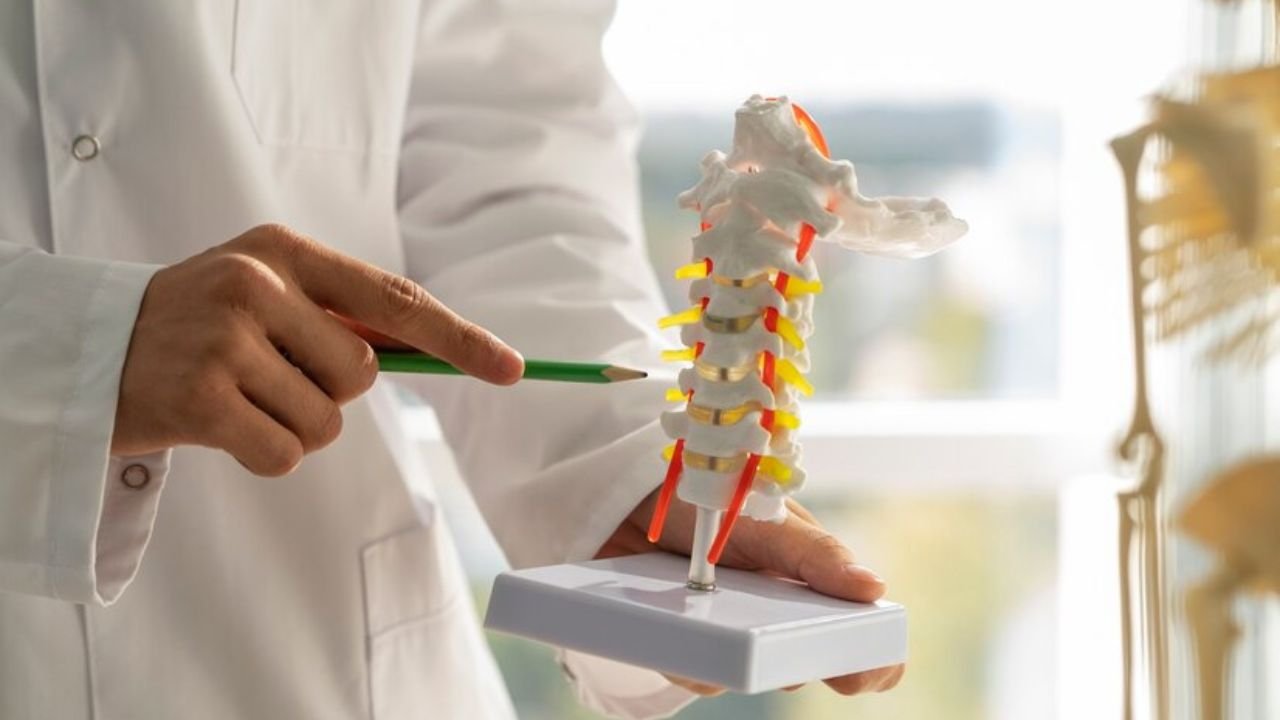Because of the potential influence on everyday living, disorders such as disc desiccation demand consideration in the field of spinal health. Our spinal discs are essential for preserving the spine’s structural integrity and allowing for easy mobility. Comprehending disc desiccation entails knowing what it is and why maintaining disc health is important.
Understanding the Spinal Discs
In order to properly understand disc desiccation, we must examine the structure and operation of our spinal discs. These discs, which are located in the space between the vertebrae, provide the spine flexibility and serve as shock absorbers. They are made up of an inner core that resembles gel (nucleus pulposus) and a stiff outer layer called annulus fibrosus.
What is Disc Desiccation?
Disc desiccation is the term used to describe the gradual dehydration and degradation of the spinal discs. The discs’ capacity to cushion between vertebrae and absorb stress is lost as a result of this process. Disc desiccation is caused by a number of variables, including age, trauma, and lifestyle choices including smoking and bad posture.
Symptoms of Disc Desiccation
Disc desiccation symptoms might differ according on the degree and location of the problem in the spine. Chronic back pain, stiffness, and limited mobility are common complaints. Because the degenerating discs pinch nerves, people may also feel pain or numbness extending down their limbs.
Diagnosis of Disc Desiccation
A combination of physical examination, medical history review, and imaging tests like CT, MRI, or X-rays are often used to diagnose disc desiccation. Healthcare professionals may evaluate the degree of disc degeneration and choose the best course of action for therapy with the use of these diagnostic instruments.
Treatment Options for Disc Desiccation
The goals of disc desiccation therapy are to relieve pain, reestablish spinal function, and stop future degeneration. Medication, lifestyle changes, and physical therapy are examples of conservative therapies. Surgical procedures like discectomy or spinal fusion may be suggested when non-invasive therapies are unable to relieve symptoms.
Prevention Tips for Maintaining Disc Health
To preserve the best possible disc health and avoid diseases like disc desiccation, prevention is essential. Maintaining proper posture, working out often to build stronger back and core muscles, and quitting smoking can all help protect the spinal discs’ integrity and lower their chance of degeneration.
Living with Disc Desiccation
Living with disc desiccation can be challenging, but adopting certain coping strategies and lifestyle modifications can improve quality of life. This may include using ergonomic furniture, implementing proper lifting techniques, and incorporating gentle exercises into daily routines to alleviate pain and stiffness.
Importance of Seeking Medical Advice
It is imperative that those who are suffering signs of disc desiccation get prompt medical evaluation and help. Long-term results can be enhanced and problems like disc herniation or nerve injury can be avoided with early identification and treatment. Speaking with a medical expert can help you receive recommendations for individualized care that are tailored to your requirements.
Research and Innovations in Disc Desiccation Treatment
The range of disc desiccation treatments is continually growing due to ongoing research and technological breakthroughs in medicine. Novel treatments including stem cell therapy, regenerative medicine, and minimally invasive surgery provide encouraging substitutes for conventional surgical methods. Future research may yield more focused and efficacious therapies to treat disc degeneration.
Conclusion
In summary, disc desiccation is a frequent spinal disorder marked by intervertebral disc degeneration and dehydration. For disc desiccation to be properly managed and spinal health preserved, it is important to comprehend the symptoms, diagnosis, and available treatment choices. People can lessen the effects of disc desiccation on their everyday lives and continue to lead active, healthy lifestyles by making preventative measures a priority and promptly obtaining medical guidance.
FAQs
- Is disc desiccation a reversible condition?
- Even though disc desiccation cannot be reversed, symptoms can be lessened and more degeneration can be stopped with prompt intervention and the right care.
- Can disc desiccation lead to other spinal problems?
- Indeed, there is a chance that significant disc desiccation will worsen the condition and lead to problems such disc herniation, spinal stenosis, or nerve compression.
- Are there any specific exercises recommended for individuals with disc desiccation?
- Walking, yoga, and swimming are examples of low-impact workouts that can strengthen the muscles supporting the spine without overstretching the damaged discs.
- What are the surgical options available for treating disc desiccation?
- Depending on the degree and location of the deteriorated discs, surgical treatments for disc desiccation may involve discectomy, laminectomy, spinal fusion, or artificial disc replacement.
- How long does it take to recover from surgery for disc desiccation?
- Recovery times might change based on a patient’s unique circumstances and the sort of surgery they had. After surgery, most patients can anticipate a gradual return to their regular activities in a few weeks to months.





